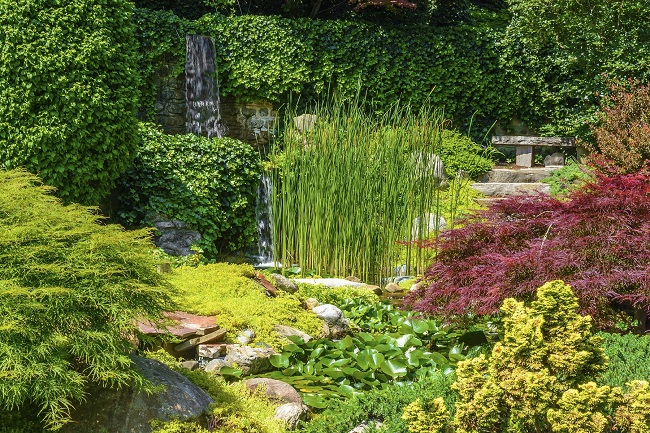
Japanese gardens are known for their serene beauty, harmonious designs, and meticulous attention to detail. These captivating landscapes have a rich history that spans centuries, offering a tranquil escape and a deep connection to nature. In this article, we will explore the origins and development of Japanese gardens, as well as provide a step-by-step guide for beginners interested in creating a simple yet stunning Japanese garden of their own.
The History of Japanese Gardens
The art of Japanese gardening dates to the Asuka period (6th-7th century) when Japan began importing and adapting Chinese culture, including garden design. Over time, however, the Japanese developed their own unique style, drawing inspiration from indigenous traditions such as Shinto and Zen Buddhism. Gardens became an integral part of Japanese culture and were often designed to reflect the philosophies of harmony, balance, and tranquility.
Types of Japanese Gardens
Kare Sansui (Dry Gardens)
Also known as rock gardens or Zen gardens, Kare Sansui gardens feature carefully arranged rocks, gravel, and sand to mimic natural landscapes and evoke a sense of serenity. Raked patterns in the sand symbolize water or waves, and strategically placed rocks represent islands or mountains.
Tsukuyomi (Hill Gardens)
Tsukuyomi gardens recreate miniature versions of natural landscapes, incorporating hills, trees, waterfalls, and ponds. These gardens often feature winding paths that lead visitors on a journey of discovery, with carefully placed plants and rocks creating a sense of depth and balance.
Chaniwa (Tea Gardens)
Tea gardens are specifically designed to enhance the tea ceremony experience. They typically include a tea house, stone path, and a contemplative space with carefully chosen plants and elements that promote a sense of tranquility and harmony.
Strolling Gardens
Strolling gardens, such as the famous Katsura Imperial Villa in Kyoto, are designed to be enjoyed while walking along winding paths. These gardens incorporate various elements like ponds, bridges, pagodas, and carefully curated flora to create a harmonious and relaxing atmosphere.
Creating a Simple Japanese Garden
For beginners looking to create a Japanese garden, here are some simple steps to get you started.
Research and Planning
Study different types of Japanese gardens to determine the style you prefer. Consider the available space, climate, and natural features of your garden area and plan the layout, considering elements like paths, water features, and focal points.
Balance and Symmetry
Japanese gardens emphasize balance and symmetry, so aim for a harmonious arrangement of elements. Use natural materials like rocks, gravel, and sand to create a sense of simplicity and tranquility.
Selecting Plants
Choose plants that are suitable for your climate and garden size. Use evergreen trees, shrubs, and bamboo to provide year-round interest and a sense of structure. You can also incorporate moss, ferns, and flowering plants like cherry blossoms or Japanese irises for additional color and texture.
Water Features
If space permits, consider adding a small pond, waterfall, or stream to introduce the soothing sound of water. Adding Koi fish and water lilies can enhance the beauty and tranquility of the water feature.
Focal Points and Ornaments
Integrate focal points like stone lanterns, bamboo fences, or pagodas to add depth and interest to your garden. Choose ornaments that complement the overall design and theme of your Japanese garden.
Maintenance
Regularly prune plants and remove weeds to maintain the neatness and clarity of the garden. Rake gravel or sand patterns to keep them clean and well-defined. Properly care for any water features, ensuring they remain clean and functioning.
Conclusion
Japanese gardens are not just stunning landscapes; they are also a reflection of ancient philosophies and a deep appreciation for nature. Whether you choose to create a dry garden or a lush tea garden, the principles of balance, harmony, and tranquility will guide you in designing your own miniature oasis. By incorporating natural elements, careful planning, and a touch of creativity, you can embark on a journey to create a simple yet captivating Japanese garden that will bring a sense of calm and serenity to your outdoor space.
Related Articles & Free Email Newsletter Sign Up
Aralias Provide an Exotic Look in Many Different Colors
How to Grow Bonsai Trees for Beginners




Comment here